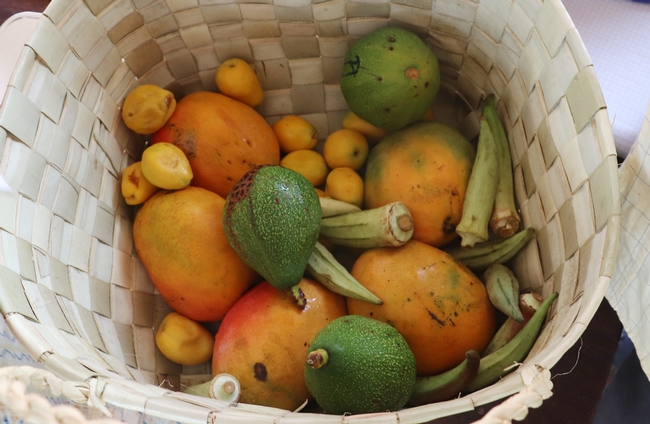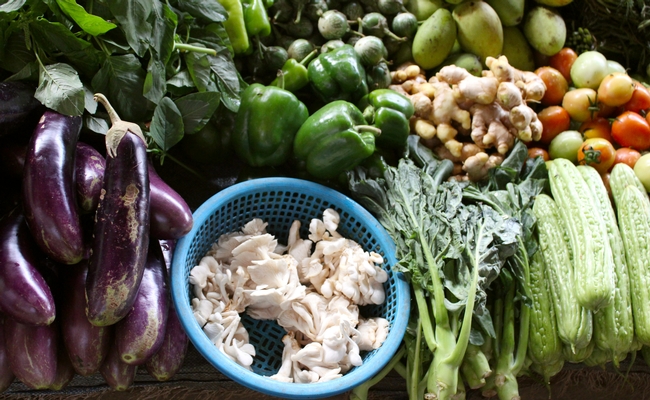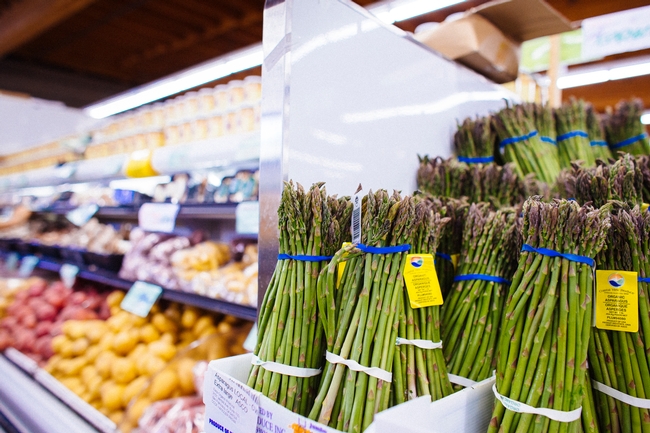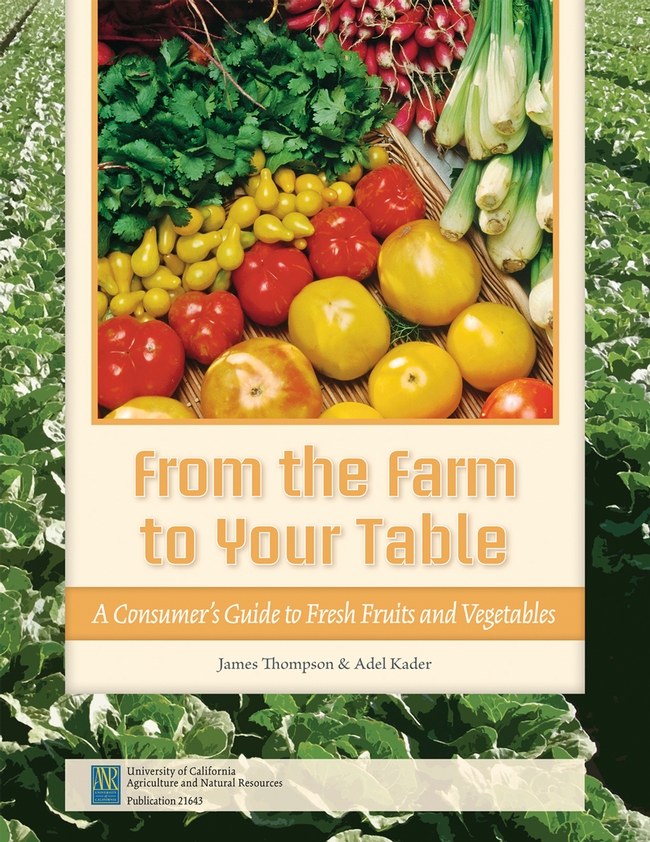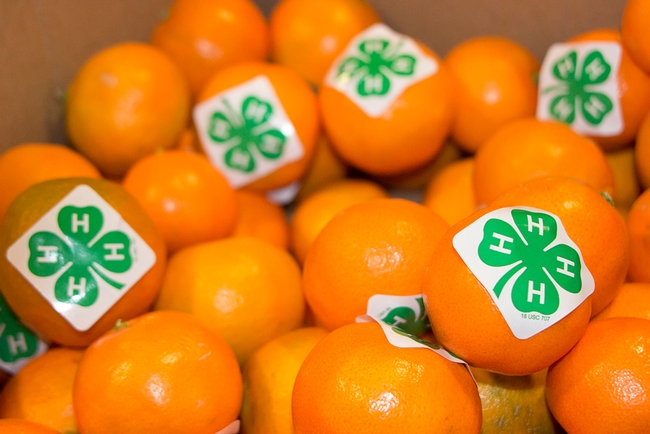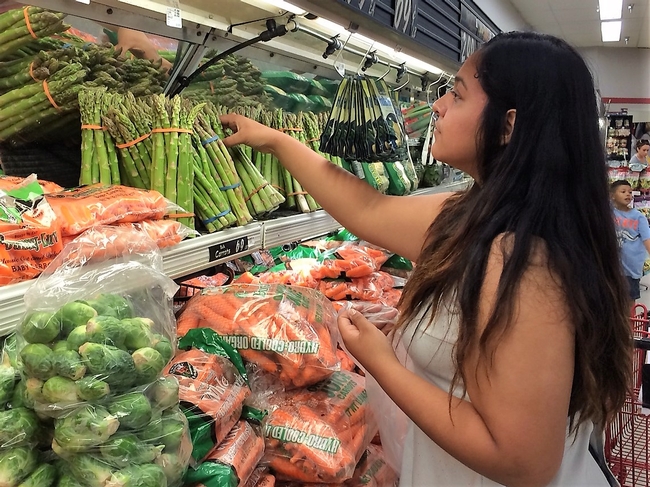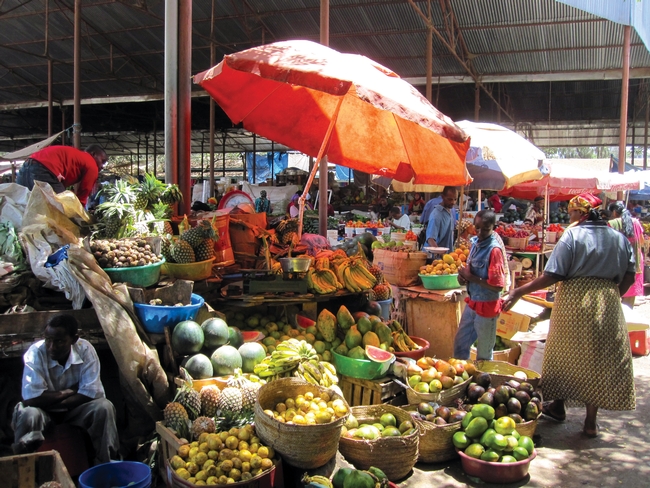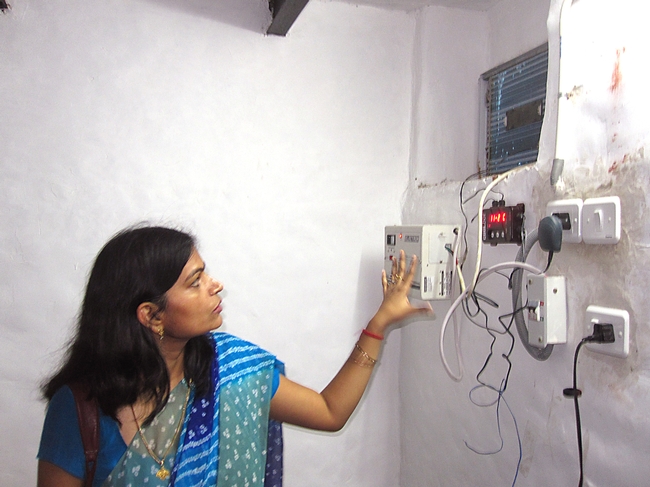Posts Tagged: fruits
Making the case for fruits and vegetables
Why do you love fruits and vegetables? Is it their bright colors? Their many shapes and varieties, the way they can makeover your plate with the seasons? The opportunity to taste local terroir in a very fresh bite of fruit or forkful of salad?
Is it more about the juiciness, crunchiness or succulence?
Or do you think more about nutrition? About vitamins, micronutrients and fiber, after decades of being encouraged to eat “5 A Day” to be healthy? Is it about that feeling of righteous virtue when you fill half your plate with fruits and vegetables — and know you're earning a gold star for eating right?
The importance of eating fruits and vegetables has been making headlines again recently, with studies refocusing on the concept of “nutrition security” in a changing climate and pushing for an emphasis on nutrient consumption. The EAT-Lancet commission — while mostly garnering headlines in the United States related to reduced meat consumption — also recommended a diet that would require almost every global region to increase its consumption of fruits and vegetables to meet healthy diet goals.
But there's another reason to love fruits and vegetables that might not be as obvious. Here's a 30-second video clip of what a young farmer in Uganda had to tell me about vegetables, when I had the chance to meet him last year:
“There's no quicker source of getting money in town,” Boaz Otieno explained, when discussing why he chose to farm instead of going to town to find a job. He also talked about the concept that he could grow vegetables like tomatoes on a smaller plot of land and earn as much for those tomatoes as a larger plot of corn or cassava.
"You might even grow (tomatoes) twice while the cassava is not yet harvested, so there's a lot of money in horticulture," he said.
Otieno is a farmer who was also working as a site coordinator for a research project led by Kate Scow in Uganda, which was supported by the Horticulture Innovation Lab, the USAID-funded research program that I work for at UC Davis. Elizabeth Mitcham, director of the Horticulture Innovation Lab and a UC Cooperative Extension specialist, often talks about the “double-duty impacts” of fruits and vegetables, as these crops can be a tool to achieve two major global goals: improving nutrition and reducing poverty.
And it's not just one farmer's opinion that horticultural crops can yield higher incomes. In a white paper about aligning the food system to meet fruit and vegetable dietary needs, the authors pointed out that data from Africa and Asia have shown farmer profits per hectare 3-14 times higher when growing vegetables versus growing rice. The paper also points out that USDA estimates fruits and vegetables account for 23 percent of production value in American agriculture, grown on less than 3 percent of the country's agricultural land. And here in California, fruits and vegetables are a $20 billion industry.
Later this month, the Horticulture Innovation Lab will be hosting a conference in Washington, D.C., focused on making the case for fruits and vegetables with the theme, “Colorful Harvest: From Feeding to Nourishing a Growing World.” The conference will bring together decision makers, international development practitioners, and researchers from universities across the United States, Africa, Asia and Central America to discuss how horticultural innovations can advance global issues of food security, food waste, gender empowerment, youth employment, malnutrition, and poverty reduction.
While the conference speakers and participants will be diverse, we're also working to bring farmers' voices — like Otieno's — into the conference with video clips from our partners in Nepal, Honduras, Rwanda and elsewhere, to explain what exactly it is that makes them love fruits and vegetables.
More information:
- Conference info: Colorful Harvest: From Feeding to Nourishing a Growing World
(Check the conference webpage for more videos and presentation info after the event.) - White paper: Aligning the Food System to Meet Dietary Needs: Fruits and Vegetables
- More about the Horticulture Innovation Lab
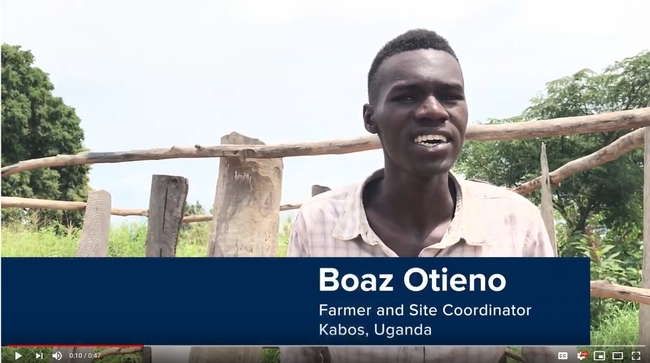
Watch a short video clip on what Boaz Otieno likes best about vegetables: https://youtu.be/aEu9BgL9aH4
NPI study finds that prices for fruits and vegetables may be higher in low-income neighborhoods
Shoppers purchasing fruits and vegetables in stores located in low-income neighborhoods in California may pay more for those fruits and vegetables than shoppers in other neighborhoods, according to a study that examined prices in a large sample of stores throughout the state.
Published online in March 2018 in the journal Public Health Nutrition, the study, conducted by researchers at UC's Nutrition Policy Institute, involved more than 200 large grocery stores, 600 small markets, and 600 convenience stores in 225 low-income neighborhoods (where at least half of the population was at or below 185 percent of the Federal Poverty Level) and compared observed prices to purchased price data from chain grocery stores in the same counties during the same months.
The study found that produce prices for the items examined (apples, bananas, oranges, carrots and tomatoes) were higher in stores in low-income neighborhoods than the average prices of those items sold in stores in the same counties during the same month. Fruits and vegetables for sale in convenience stores in low-income neighborhoods were significantly more expensive than those for sale in small markets or large grocery stores. Yet even in large grocery stores the study found prices in the low-income neighborhoods to be higher than average county grocery store prices during the same month.
“Americans eat too few fruits and vegetables to support optimal health, and we know that dietary disparities among socioeconomic groups are increasing,” said study author Wendi Gosliner. “This study suggests that one important issue may be fruit and vegetable prices — not just that calorie-per-calorie fruits and vegetables are more expensive than many unhealthy foods, but also that there are equity issues in terms of relative prices in neighborhoods where lower-income Californians live.”
Additionally, the study examined the quality and availability of fruits and vegetables in stores and found that while less than half of convenience stores (41 percent) sold fresh produce, even fewer (1 in 5) sold a wide variety of fruits or vegetables, and few of the items that were for sale were rated by trained observers to be high quality (25 percent for fruits and 14 percent for vegetables).
“This study suggests that convenience stores in low-income neighborhoods currently fail to provide access to high-quality, competitively priced fresh fruits and vegetables," said Pat Crawford, nutrition expert and study author. “A healthy diet can prevent disease and reduce health care costs in the state. States need to explore new ways to help ensure that families, particularly those living in low-income neighborhoods where convenience stores are the only food retailers, have access to healthy, high-quality foods that are affordable,” Crawford added.
The study also found that convenience stores participating in federal food programs (the Supplemental Nutrition Assistance Program [SNAP] and/or the Supplemental Nutrition Program for Women, Infants, and Children [WIC]) were more likely to sell fresh produce and to offer higher quality and a wider variety of fruits and vegetables than stores not participating in either program.
The study was conducted under contract with the California Department of Public Health. Funding is from USDA SNAP. USDA is an equal opportunity provider and employer.
Keeping produce at its best
Farmers markets, produce stands, and likely your own backyard garden are an exploding bounty as California strawberries, stone fruits, and tomatoes show the summer produce season is in full swing.
But have you ever wondered what to look for when selecting fruits and vegetables? Why does your refrigerator have separate bins for fruits and vegetables? Should fresh tomatoes be stored in the refrigerator or on the counter? And how do you keep fresh basil fresh until you're ready to use it?
These and many more questions are answered in the colorful handbook: From the Farm to Your Table: A Consumer's Guide to Fresh Fruits and Vegetables available at anrcatalog.ucanr.edu
And now through July 31 the publication is 40 percent off if you order through our online catalog. So you can grab a copy for under $5.
This guide is brimming with tips from the pros at the Postharvest Technology Center at UC Davis. You'll find information on storage and handling for quality and safety as well as handy tables explaining which fruits and vegetables should be stored in the refrigerator and which should be stored on the counter. You'll also learn what to look for when selecting popular produce items for best quality.
And if you've ever wondered the steps your produce takes to get from the field to your market, the journey is explained here.
Oh, and the answers to those questions?
Your refrigerator has separate bins so you can keep keep ethylene gas-producing fruits such as apples, peaches, and pears away from vegetables. The naturally occurring gas can hasten spoilage of vegetables.
Un-cut tomatoes should be stored on the counter, not in the refrigerator.
And keep your basil fresh by treating it as you would cut flowers; place the stems in a glass of water on the counter until you're ready to use it.
Teens put their food smarts to the test
Grocery shopping can be the most anticipated or the most dreaded necessity of daily life. A trip to the market can end with a smile over the thrill of victory from finding great bargains or end with a frown from the agony of defeat over budget anxieties. For most of us, budget is the primary factor in our food experiences. Low budget or no budget is often the culprit that leads to unhealthy food choices.
Armed with nutrition knowledge acquired through the University of California 4-H Food Smart Families program with the UC Kearney Agricultural Research and Extension Center, teens from Parlier High School in Fresno County are teaching Parlier youth ages 8-12 how to get around budget roadblocks on the path to healthy eating. The program uses a “Teens as Teachers” approach, with teens educating younger youth through a series of hands-on, interactive nutrition lessons after school.
Food connections to local agriculture are highlighted through the partnership with the UC Kearney Agricultural Research and Extension Center. The center will host agriculture tours and family nutrition education activities at a Wellness Fair later this month to wrap up the program.
According to recent United States Department of Agriculture studies, nearly 16 million children live in households where they do not have consistent access to food throughout the year.
UC 4-H Food Smart Families empowers families through food knowledge and education to build sustainable solutions that confront food insecurity and improve health. Youth are engaged at a critical age for growing skills and establishing behaviors today that become sustainable, healthy habits for their families and communities tomorrow. Youth learn they can prepare food themselves and parents learn about working together as a family to plan healthy meals.
Teen teachers put their new skills to the test on a recent field trip to the local grocery store. After a store tour and 4-H training on perimeter shopping, unit pricing and the downfalls of impulse buying, they were given a shopping challenge. The goal was to purchase, within the assigned budget, three items from each of the vegetable, fruit, grain, dairy and protein food groups to create healthy meals at home. As the teens had been learning while teaching their younger counterparts, eating healthy on a budget is achievable with a little nutrition education and careful planning.
Thoughtful discussions, and sometimes passionate debates, ranging from whole grain pasta versus whole wheat pasta to the tasty virtues of hummus, mixed with youthful laughter. The teens were pleasantly surprised to discover they had additional budget to spare. Return trips were made to the produce department for more fruit, vegetables and even hummus.
Comments from the teens told the story of their success. “Now I know what my mom has to go through when she's shopping for food,” and “Look at my cart. Food Smart Families is really influencing me!” Who knew grocery shopping could be so much fun?
The USDA Center for Nutrition Policy and Promotion offers these 10 tips for affordable vegetables and fruits:
• Use fresh vegetables and fruits that are in season.
• Check your local newspaper, online and at the store for sales, coupons and specials.
• Plan out your meals ahead of time and make a grocery list.
• Compare the price and number of servings from fresh, canned and frozen forms of the same vegetable or fruit.
• Buy small amounts more often to ensure you can eat the foods without throwing any away.
• For fresh vegetables or fruits you use often, a large size bag is the better buy.
• Opt for store brands when possible.
• Buy vegetables and fruits in their simplest form.
• Start a garden for fresh, inexpensive, flavorful additions to meals.
• Prepare and freeze vegetable soups, stews or other dishes in advance.
Hot days, cool rooms, tasty vegetables
I'll admit that one of my favorite things to do on a hot day is to walk into an air-conditioned room. That burst of cool air in those first moments can be so refreshing.
It turns out I'm not alone — fruits and vegetables like to be cool on hot days too.
Controlling temperature helps regulate the aging process of a fruit, along with its water loss and microorganism growth. Storing fruits and vegetables at their lowest safe temperatures means they taste better and last longer.
To help us know the best ways to store fresh produce at home, the UC Davis Postharvest Technology Center offers a free PDF poster Storing Fresh Fruits and Vegetables for Better Taste, which includes tips for different fruits and vegetables, from avocado to watermelon.
Knowing the right temperature is only part of the battle for farmers, who are responsible for the first links in the cold chain. Getting produce out of the sun and cool for storage can be a big challenge — and an expensive one.
But a farmer in New York, Ron Khosla, answered this challenge with a tool that can help make cooling produce less expensive for small-scale farmers. He created the CoolBot, a micro-controller that turns a well-insulated room with a regular air conditioner into a commercial cool room for storing fruits and vegetables.
Just as small-scale American farmers struggle with affordable cooling, so do smallholder farmers elsewhere in the world. Researchers with the Horticulture Collaborative Research Support Program (Horticulture CRSP) decided to test the CoolBot device, first at the UC Davis Student Farm and then with farmers in India, Honduras and Uganda.
Indeed, the CoolBot-equipped rooms worked, and the program is building more in Bangladesh right now. But there is a catch: Farmers must have access to reliable grid electricity for a cool room like this to work. To address this problem, the CoolBot in Uganda was powered with solar photovoltaic cells, but that led to another set of challenges — expensive equipment and fear of theft.
So how do you effectively cool vegetables, hot from a field, without grid electricity? A solution that is low-cost, effective and off-grid has not been found yet. In an effort to uncover such a solution, Horticulture CRSP will soon be launching a technology design competition that asks that very question. Can you answer this challenge?

